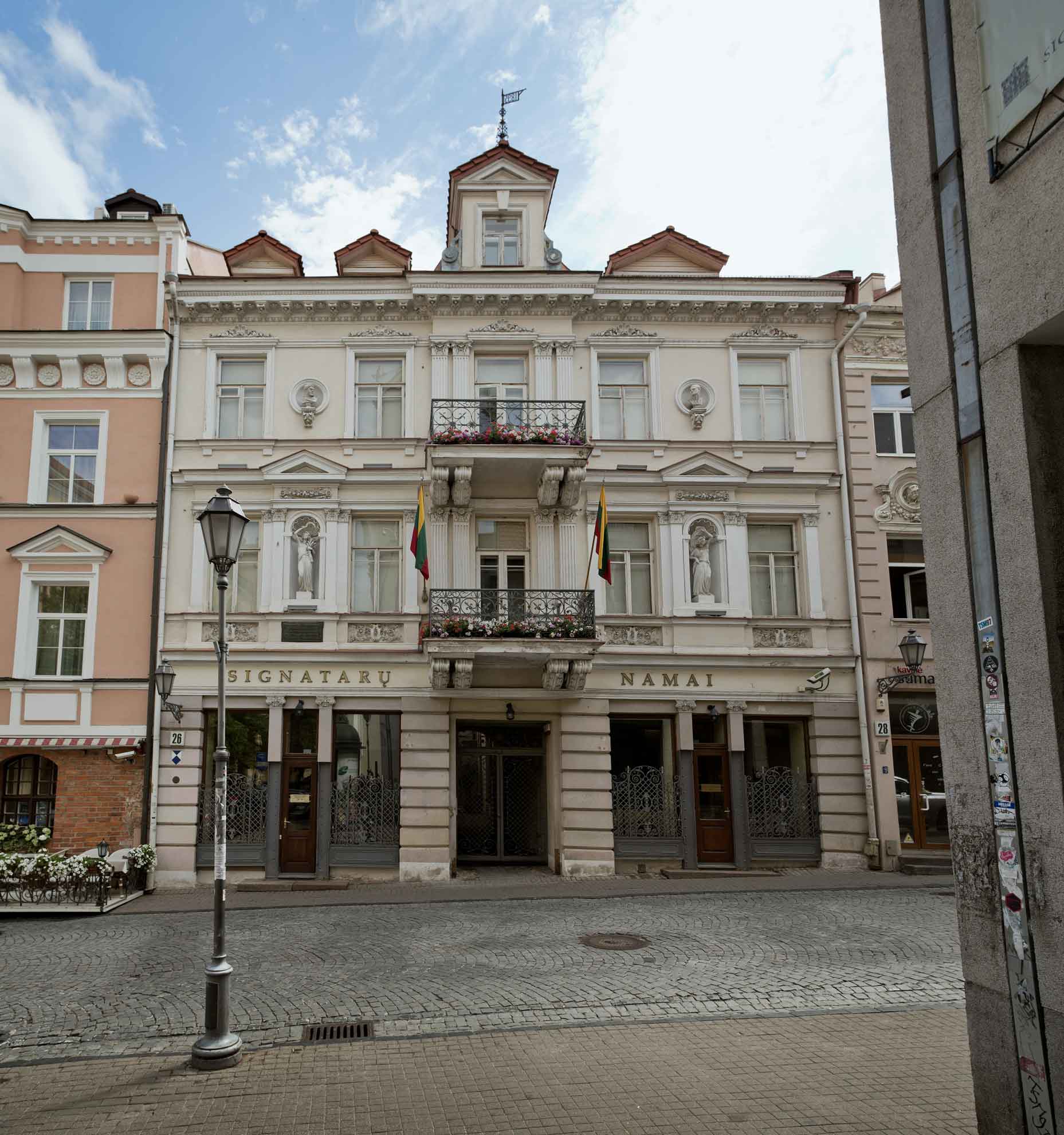26 Pilies Street

Photographer – Tomas Kapočius
26 Pilies Street. 2018
Lithuanian Art Museum
The building from the late 15th century with its cellars intact belonged to the Vilnius burgomaster in the mid-17th century. The building suffered extensive damage during the great fires in the middle of the 18th century – it was rebuilt as a combination of two houses in the 19th century: its main facade faces Pilies Street, while the east wing is on Literatų Street. It used to be a goldmith’s workshop, a cafe, tavern and store. Karl Sztral acquired the building in the second half of the 19th century. At the end of the century, the building was reconstructed and took on a neo-Renaissance appearance. On the ground floor, Karl Sztral’s son Kazimierz opened a cafe called Biały Sztral which was very popular among the Vilnius intelligentsia – it was open until the middle of the 20th century.
The Lithuanian War Relief Committee established its offices on the third floor from 1914. It organised a wide war refugee support network during the years of World War I, collecting donations, supporting over 200,000 Lithuanian refugees in Russia, founding schools, dormitories, feeding points and printing Lithuanian publications. This building is associated with the most important event in the state – it was here that on February 16, 1918 the Council of Lithuania signed the Act of Independence of Lithuania. In 2000, a museum – House of the Signatories – was opened in the building.

